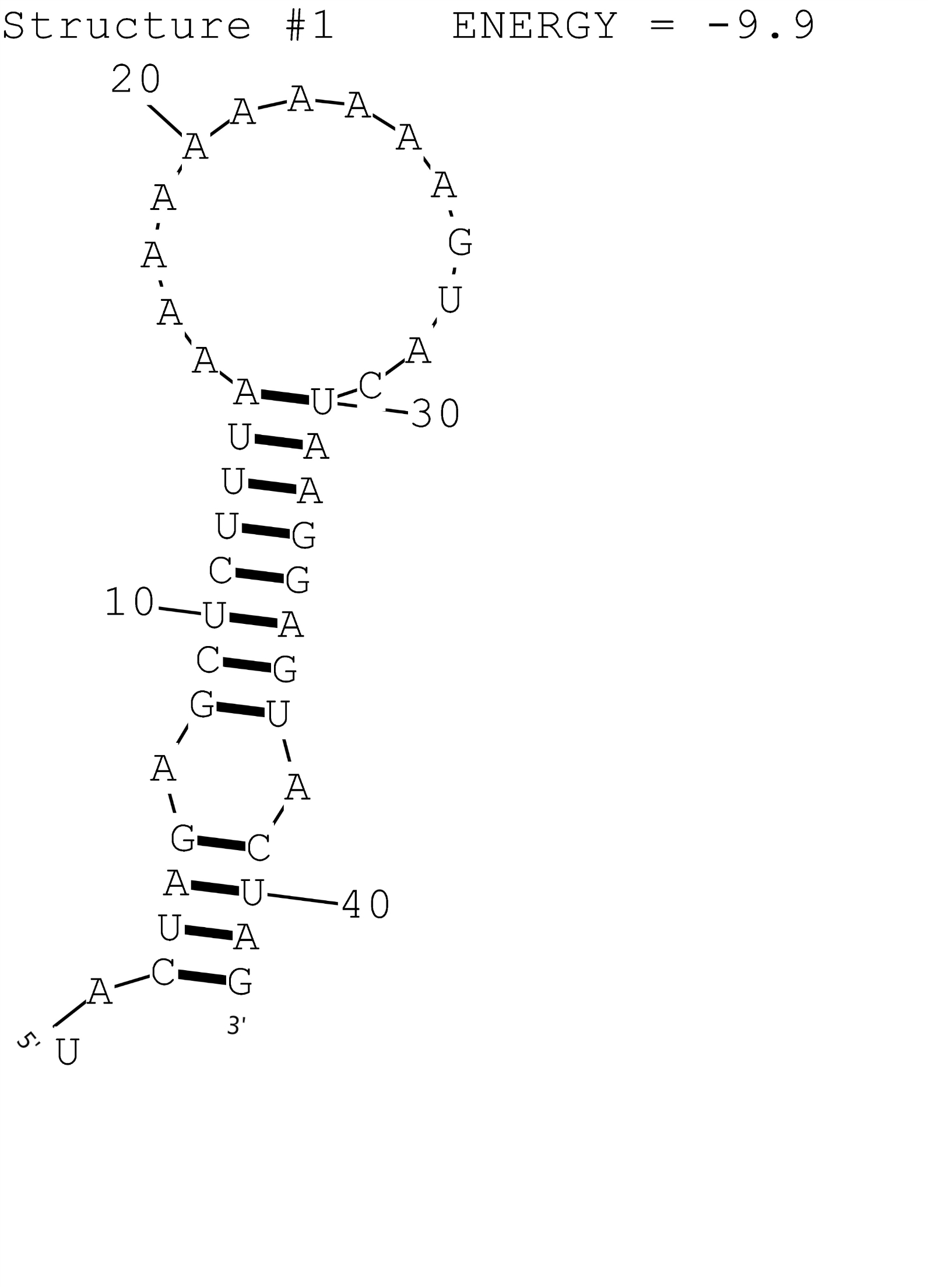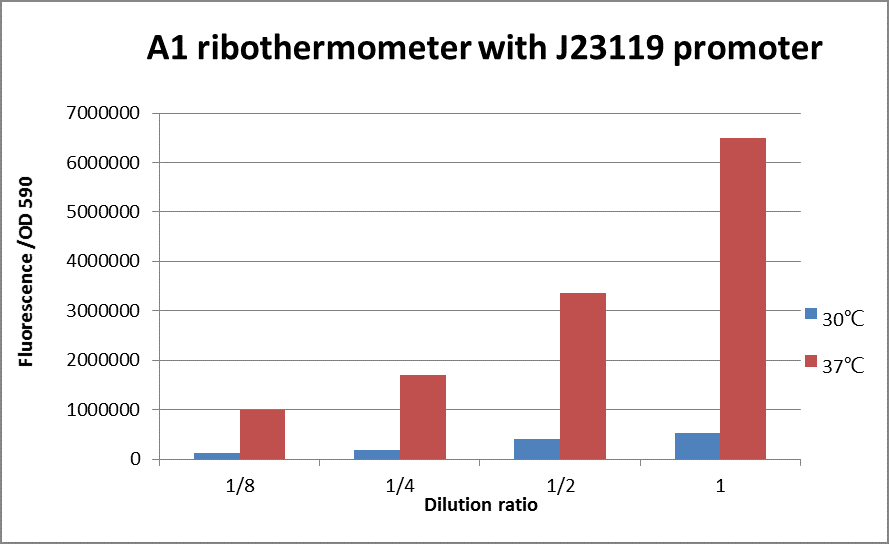Difference between revisions of "Part:BBa K1824000"
(→Characterization) |
(→Characterization) |
||
| Line 11: | Line 11: | ||
[[Image:A1-J23119.png|600px]] | [[Image:A1-J23119.png|600px]] | ||
<br>'''Figure 2:''' The fluorescence of J23119+A1 with different dilution ratio at 30℃ and 37℃. | <br>'''Figure 2:''' The fluorescence of J23119+A1 with different dilution ratio at 30℃ and 37℃. | ||
| + | <br> | ||
| + | <br> | ||
| + | <br>eGFP protein was used as report protein to show the function of ribothermometer. The bacteria were centrifuged and observed under UV light by eyes directly. Then the bacteria were sonicated and plate reader was used to measure the fluorescence of eGFP. | ||
<br>As Figure 2 shows, the fluorescence of the sample at 37℃ is 12 times higher than the fluorescence of the sample at 30℃, which means the amount of protein express at 37℃ is 12 times bigger than at 30℃. | <br>As Figure 2 shows, the fluorescence of the sample at 37℃ is 12 times higher than the fluorescence of the sample at 30℃, which means the amount of protein express at 37℃ is 12 times bigger than at 30℃. | ||
Revision as of 12:43, 17 September 2015
Constitutive Promoter J23119 + RNA Thermometer A1
This is a composite regulatory part that consisting of constitutive promoter BBa_J23119 and RNA Thermometer A1 BBa_K1824556 for temperature induced gene expression at 42 degrees. The possible secondary structure of A1 was simulated by RNAstructure (Fig.1). This combination is compatible with the assembly method that XJTLU-CHINA promoted.

Figure 1: Possible secondary structure of RNAT A1.
Characterization

Figure 2: The fluorescence of J23119+A1 with different dilution ratio at 30℃ and 37℃.
eGFP protein was used as report protein to show the function of ribothermometer. The bacteria were centrifuged and observed under UV light by eyes directly. Then the bacteria were sonicated and plate reader was used to measure the fluorescence of eGFP.
As Figure 2 shows, the fluorescence of the sample at 37℃ is 12 times higher than the fluorescence of the sample at 30℃, which means the amount of protein express at 37℃ is 12 times bigger than at 30℃.
References
1. Nocker, A. et al. mRNA-based thermosensor controls expression of rhizobial heat shock genes. Nucleic Acids Res. 29, 4800–4807 (2001).
Sequence and Features
- 10COMPATIBLE WITH RFC[10]
- 12INCOMPATIBLE WITH RFC[12]Illegal NheI site found at 7
Illegal NheI site found at 30 - 21COMPATIBLE WITH RFC[21]
- 23COMPATIBLE WITH RFC[23]
- 25COMPATIBLE WITH RFC[25]
- 1000COMPATIBLE WITH RFC[1000]
